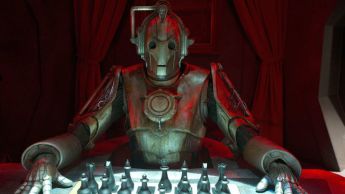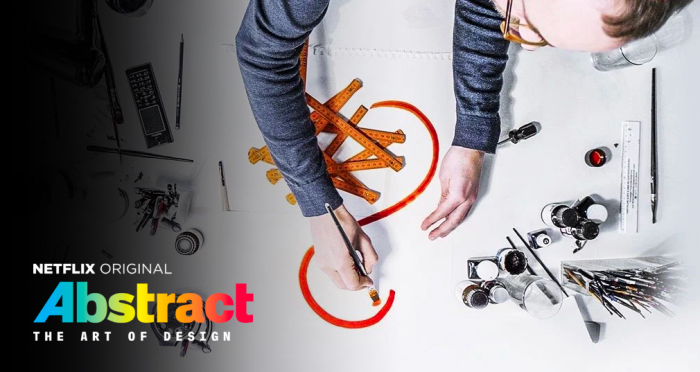 Another Cybermen episode, another rummaging around into their past to try to find out why they used to be scary but haven’t really been since 1968. Little by little, we’re getting there. The redesign is an attempt to recreate the simpler, uncanny valley faces of the Moonbase, Tomb and Wheel in Space Cybermen and it is very successful, but these new Cybermen are still stompy, apparently against the wishes of Neil Gaiman. I don’t know the full story as to why his request for them to move silently was ignored, but if you are going to ask a creative genius to write for your series it is a bit odd to think that his judgement on something like that won’t be sounder than yours.
Another Cybermen episode, another rummaging around into their past to try to find out why they used to be scary but haven’t really been since 1968. Little by little, we’re getting there. The redesign is an attempt to recreate the simpler, uncanny valley faces of the Moonbase, Tomb and Wheel in Space Cybermen and it is very successful, but these new Cybermen are still stompy, apparently against the wishes of Neil Gaiman. I don’t know the full story as to why his request for them to move silently was ignored, but if you are going to ask a creative genius to write for your series it is a bit odd to think that his judgement on something like that won’t be sounder than yours.
Gaiman really riffs on the 60s Cybermen stories, and I was delighted to see a style of set design closely resembling The Tomb of the Cybermen, complete with those iconic Cyber semi-circles. But where the episode is most effective is the new ideas it brings to the Cybermen. The mites add a new level of scariness, with Cybermen now able to upgrade humans with tiny robotic creatures, playing brilliantly on the fear of insects getting into the body. The ultra-fast movement and head spinning are also fabulous, as is the idea of the Cybermen upgrading themselves to deal with new threats. Just like Star Trek paid homage to the Cybermen (I’m being charitable there) with the Borg, Gaiman returns the favour with the idea of Cybermen adapting themselves so they are immune to weapons after the first one or two shots, which is exactly what the Borg do. The post-upgrade/assimilated humans with bits of tech stuck to their faces is also lifted wholesale from Trek, and is done with considerably less style. I know you can’t put child actors through hours of prosthetics, but a couple of flashing lights really aren’t going to convince us that a scary, invasive conversion has taken place. This is also conversion without consequence. The Doctor’s implants disappear from his face in an instant, leaving no scars.
A much better treatment of the Cybermen is to use the idea of Wolfgang von Kempelen’s Turk, although Big Finish did this in a much more interesting way two years before in The Silver Turk and the idea is not utilised here beyond a set piece. If you are not familiar with the true history behind this, then take a look at this page from my history blog, because the real Turk was an absolutely amazing invention, despite the puppetry. It convinced audiences for decades.
Gaiman attempts to turn the fear factor up to eleven by having the Doctor himself converted, but this is undermined by the aforementioned bit of tech stuck on his face, and also because he remains Doctorish throughout, rarely losing himself to the process. The battle between the Doctor and the Cyber-Doctor in his own mind should have been so much better, but it suffers from (a) asking too much of Matt Smith, and (b) some horribly pedestrian direction, with endless scenes of the Doctor looking right in warm light and the Cyber-Doctor looking left in cold light, all framed in exactly the same way against a nasty bit of dodgy green screen. Meanwhile, Webley stands around in the background for most of the episode, with not much to do after he has been converted.
Elsewhere we get an attempt at a bizarre masterpiece, which almost comes off. There are a couple of wonderful effects shots but the set design is lacking the disturbing surrealism that Gaiman was clearly looking for. His “Webley’s World of Wonders” and “Natty Longshoe’s Comical Castle” conjure up images in the mind that don’t make it onto screen. This should have been the Doctor vs Cybermen in Wonderland.
It is great to see Warwick Davis in Doctor Who, one of my favourite actors ever. Porridge is the only memorable guest character and he is as brilliant as you would expect from Davis’s effortless, understated performance, showing how it’s done while Smith hams it up in an uncharacteristic mis-step. I can forgive the way he simply removes everyone from the story when it is time to wrap it up, and also the unconvincing marriage proposal (why does everyone is sci-fi skip straight to the marriage without asking for a date first?) because he is such a fascinating parallel figure to the Doctor: somebody who could have stayed at home and had great power, but instead decided that was all really, really boring and it would be much more fun to run away and explore the universe.
So we have a Cybermen episode where the Cybermen finally work pretty well, leaving aside the stomping, but it has to be said the Doctor doesn’t. The final weird misunderstanding of his character is that ultimate “ew” moment when he pervs over Clara’s tight-fitting skirt after she leaves the TARDIS. It’s obviously supposed to be funny but Matt Smith is presented with a line that seems to be completely at odds with the character he has been playing for three years and doesn’t have a clue what to do with it. Even with all those scary super-Cybermen, this is the creepiest moment of the episode. RP
The view from across the pond:
When Neil Gaiman put pen to paper to bring The Doctor’s Wife to life, he created an instant classic and that was no surprise knowing the quality of his work. And when it was announced that he would be writing another episode of Doctor Who, I feel pretty confident that the fans all cheered. Like many, I became familiar with Gaiman through his Sandman series of graphic novels. The announcement that Nightmare in Silver was to be his take on the Cybermen made some truly happy news. As Roger and I have both said on many occasions, Cybermen are scary. They represent a possible outcome for us; a dark mirror into what we could become. Make no mistake, we are in the early stages, but wearable tech and implants can take a dark turn one day. It’s just a question of how far it goes, not whether it will go there.
Let’s take a moment to look at Cybermen; that morbidly marvelous marriage of man and machine. (Take that, alliteration!)
When we first met them in The Tenth Planet, they were genuinely scary. However with each successive return, they lost some of their scariness. The Moonbase and Tomb of the Cybermen were still scary but a little less so, and that waned more and more until, by Revenge of the Cybermen and throughout the rest of classic Who, they lost their fear factor completely. When they came back with Tennant’s Doctor, they were imposing which was scary in its own right, but not the terrifying way they started out. If we rewind for a moment, Doctor Who went off the air in 1989. Ironically in May of 1989, Star Trek introduced the Borg. These were Cybermen done right. Like the original Cybermen, we saw more of their human components; face and hands were still visible. But they got it right in ways Who never did: the Borg never clenched their fists and announce “Excellent” like they just outwitted their wife’s ex-husband! And the Borg … they could adapt on the spot. It might take a shot or two, but they were upgrading faster than any Cyberman ever did. In fact, Cybermen had a weakness to gold that lasted from Tom Baker’s era until the end of the Classic series (and even made a comeback in this very story), thus proving that the Borg still have a cybernetic leg up on their Whovian counterparts. The Borg wouldn’t have the same weakness through an entire episode. If there were any hope for Doctor Who to get it right like Star Trek did, Gaiman was likely to be the right man for the job!
Unfortunately, “The Babysitter’s Club in Space” didn’t work that well because the terrifying Cybermen are hampered be a cast that has to survive. Gaiman does make the Cybermen genuinely scary again. They can upgrade the Doctor, they use nanotech, they can move at speeds in excess of humans (although it is a little too close to The Flash for my liking), and they can adapt to threats in a way they never could before. All epic successes for Neil’s writing. But the Cybermen can’t kill the main cast, so what makes them scary is ruined by the fact that they can’t do the harm they should be able to do. Furthermore, right from the word “go”, Clara agrees to take the kids in the TARDIS because they threatened to tell that she’s a time traveler? Really? Because, you know, it’s such a believable claim… and Angie (the girl Clara babysits) thinks being in space is boring and has no interest in the TARDIS which alone should have left her speechless. It opens in a way that loses the audience. It’s that “who cares” mentality that eventually ruined Clara as a character. She looked at everything with “everything is mundane eyes” which is exactly how not to write a companion and Angie embodies that. Meanwhile, Artie, her brother, is told to take a nap while on another planet surrounded by monsters. I have a 3 year old nephew who was too energized by New Year’s Eve to get any sleep; there is no chance Artie would be laying down during this crisis!
Now, an area the episode gets right, which might make up for a lot, is the internal struggle between the Doctor and Mr. Clever. Matt Smith flips brilliantly between the two personalities warring in his head. Cinematically, I love that the cool, calculating Cybermind is shown on a blue background, while the angry, invaded Doctor’s mind is shown against a bright orange one. Even during the dialog when he’s speaking to himself, he spins so the side of him facing the camera lets the audience know which side is in control. Visually superb work. There is a sense that he is truly in trouble. On the downside however, Cyber-Doctor seems too happy about the things he’s learning from the Time Lord mind. Agreeably, this could be something so new it’s struggling for how best to process it, but technically it doesn’t make sense. And the Doctor side, threatening to regenerate is another reason consistent writers matter so much, because just a season later, we learn the Doctor is on his “final” regeneration. Bluff, you say? No, because the Cybermind had access to all of the Doctor’s thoughts and would have seen the John Hurt Doctor. At least we can say that Smith brings the episode up exceptionally even with the inherent weaknesses. Even Jason Watkins, whose villainy I’ve enjoyed in Being Human, is not utilized to the extent that he could be. The story’s success comes down to two things: the internal war for the Doctor’s mind and the change to the lore of the Cybermen.
And then promptly loses the latter success by never following up on it again. It is not until Peter Capaldi’s magnificent two-part finale that we begin to understand why the Cybermen have changed their appearance with each subsequent return, but we never see anything else done with what is developed for Nightmare in Silver. I agree that the Cyber Flash was a misstep (pun intended) but even when Capaldi is blasting the Cybermen to pieces in his finale, there’s no sign that they are adapting which was the most pivotal part of the lore built by Gaiman. When we see the Cybermen in Missy’s reveal episode, they don’t adapt. Another example is that the Cybermen here can Flash-run, but can’t fly. Yet by Capaldi’s era, they can fly but can’t Flash-run. We were given a new piece of the puzzle… and then it was thrown away. And that is not good storytelling. (Allow me to again flash back to Star Wars: The Last Jedi – you can’t just add something that was never there before and expect people to accept it and if you do add it, it should be there when we look for it again.) Storytelling has become universe building and if you take something away right after it’s been introduced, you need a reason. Otherwise the universe starts to fall apart and with a history like that of Doctor Who, the weight of that could be devastating. And we fans do not want that to happen because then the show becomes average.
I like Nightmare in Silver but a lot of that is based on Matt Smith’s chilling performance and that the Cybermen were finally brought up to speed with the Borg, even if only for a little while. I don’t like Nightmare in Silver because the story ends up being a one-off that could have just as easily featured another race that we never see again without taking away from the Cybermen that we’ve been getting to know and love all these years.
I hope his next attempt at writing Doctor Who is an upgrade… ML
Advertisements Share this:




